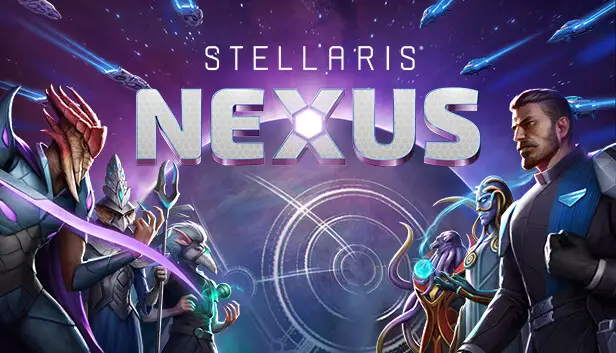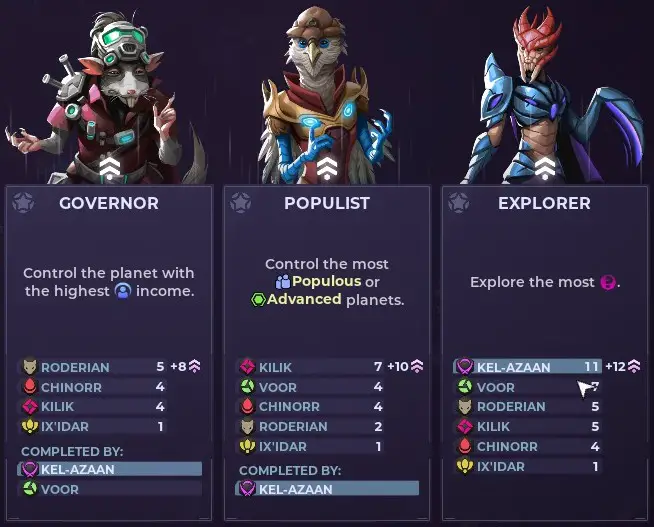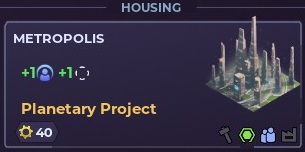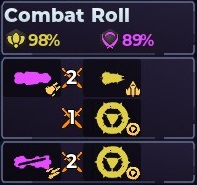Stellar의 링크 (Sn) is like a big cosmic sandbox where you play with different toys. You’ve got resources, planets, fleets, and edicts, all waiting for you to dive in and explore!
자원
In Stellaris Nexus, resources can be shown in two distinct manners.
먼저, 지원하다, 재료, and succession points are depicted through stockpile 그리고 소득:
- Stockpile represents the present resource pool ready for expenditure.
- Income signifies the additional resources accrued at the turn’s end, adding to the stockpile for subsequent turns.
둘째, science and munitions are portrayed by mobilized 그리고 cap:
- Mobilized indicates the current quantity of resources actively employed.
- Cap denotes the maximum allowable value for utilization.
지원하다
Support stands as the cornerstone resource within SN, enabling pivotal actions like fleet maneuvers, enacting edicts, and erecting starbases. Effective support management is crucial for sustaining a robust flow of productive endeavors.
While your faction and leader contribute some support, the primary bulk of your empire’s support derives from planet projects.
Every turn, the initial action incurs a cost of 1 지원하다. Subsequent actions escalate in support expenditure:
- The 2nd action necessitates 2 supports (cumulative total of 3)
- The 3rd action mandates 3 supports (accumulating to 6)
- The 4th action requires 4 supports (summing up to 10)
- The 5th action consumes 5 지원하다 (reaching a total of 15)
This pattern continues with each subsequent action incurring progressively higher support costs.
Multiple actions, such as implementing edicts, entail an additional support expense.
뿐만 아니라, each controlled planet inherently diminishes your support income by 1. This aspect should be carefully considered before annexing planets lacking a native support income.
재료
Materials serve as the essential resource for constructing planet projects, orbital items, and researching technologies within the physics and nanotech trees. Economy projects primarily provide materials, while invading planets yields a modest amount of looted materials.
크레딧
크레딧, acting as an alternative currency, can be utilized when facing shortages of stockpile support or materials. The conversion rate is 2 credits for 1 support and 1 credit for 1 material. Acquiring credits predominantly occurs through trade with other empires and neutral planets.
Munitions
Munitions, or ammo, are indispensable for expanding your fleet and ships. Should you surpass your munitions cap, the excess will lead to a gradual reduction in the number of ships until your mobilized munitions decrease to a level equal to or below your cap. To bolster your munitions cap, focus on constructing military projects and researching specific technologies.
과학
Science serves as the prerequisite for researching and acquiring new technologies. Without sufficient science, accessing benefits from the Research edict becomes unattainable. Elevating your science cap is achievable by constructing science projects.
Trade value
Trade value heightens your credit income when engaging in trade with other empires and neutral planets. This value is augmented through the establishment of specific projects.
Culture
Culture embodies the presence of foreign cultures on planets. Each planet can host only one foreign culture at a time, with the addition of a new culture replacing the existing one. Empires controlling planets with foreign cultures experience a reduction in support income.
Propagating one’s culture to neutral or rival planets bestows several advantages:
- It enhances resource income based on the target planet’s type.
- It accelerates the resolution of plots on the target planet by 1 회전하다.
- When conquering the target planet, the foreign culture dissipates without plunging the planet into anarchy.
Army strength
Army strength dictates combat outcomes between fleets and planets. To seize control of a planet, a fleet must sacrifice ships. The relative army strengths of the attacking and defending empires determine the number of ships sacrificed and the amount of materials plundered from the planet. Enhancing army strength is achievable through technological research and the construction of military projects.
Council votes
In Succession mode, a council convenes every 8 연령.
During this council phase, participants have the opportunity to cast votes for a new title and a new resolution. The newly elected title remains unlockable for the duration of the game, while the chosen resolution affects all empires until the subsequent council.
The weight of each vote is contingent upon the number of controlled systems and cultural influence. Votes allocated to titles and resolutions that do not secure victory in the current round persist and carry over to the next council session.
Succession
In Succession mode, achieving the status of emperor and winning the game hinges on being the first empire to amass 100 succession points (SP).
There are five primary avenues to accrue SP:
- Signing pacts with other empires
- Constructing megastructures in orbit of your planets
- Propagating your empire’s culture on foreign planets
- Advancing the level of your leader
- Securing titles before the next council session
Each title can be unlocked once per empire, except for Regent, which awards SP at every council. Some notable titles include:
- Regent: Controlling the planet Nexus
- 정복자: Dominating the largest number of systems
- 탐침: Discovering the most anomalies
- Far Sighted: Establishing a presence in the highest number of systems on the edge of the map
- 지사: Ruling the planet with the highest support income
- 산업 자본가: Garnering the highest income of materials
- Learned: Managing the planet with the highest science output
- Opulent: Amassing the highest stockpile of credits
- Populist: Governing the largest number of populous or advanced planets
- Producer: Managing the largest number of industrial planets
Initially achieving a title bestows 12 SP, but subsequent acquisitions by other empires diminish the SP gained, with a penalty of 2 SP per empire already possessing the title.
Systems and Planets
In Stellaris Nexus, the map is known as Known Space. Each spot on this map represents a system, and within these systems, you’ll find planets in some but not all cases. The routes connecting these systems are called hyperlanes, and they’re the pathways that fleets can travel along.
지금, when it comes to planets, they can fall into two categories: either they’re neutral, meaning they’re not controlled by any empire, or they’re under the control of an empire within the game.
Exploring these systems can sometimes uncover unexplored anomalies. These anomalies hold hidden content, and you can reveal what’s within them by using the Explore edict in the game.
Planet Types
Different types of planets in Stellaris Nexus have varying capabilities for building projects on their surfaces, determined by their icons:
- Rich planets (orange hammer icon) excel in materials-generating projects.
- Advanced planets (green hexagon icon) offer flexibility in project choices, though their construction costs are generally higher compared to specialized planets.
- Populous planets (blue people icon) boast more available building slots and specialize in support-generating projects.
- Industrial planets (grey factory icon) focus on projects that convert materials into other resources like ammo, science, and trade value.
Planet projects
Each planet provides a set number of surface slots for building projects. Additional slots can be unlocked by constructing housing projects. 추가적으로, every planet can accommodate a single Planetary Project.
Planet invasion
When invading a neutral or enemy planet, a fleet is required, and the system must be devoid of enemy fleets or starbases. Upon conquest, the planet enters a state of anarchy (red fist icon) unless it was previously under the cultural influence of the conquering empire. During anarchy, no projects or orbital items can be built until the next turn.
Orbital construction
Orbital construction is available for planets under your control, except during anarchy or in the presence of enemy fleets. It enables the construction of:
- Starbases, which require increasing amounts of support and materials. Starbases aid in defending the system against enemy fleets and facilitate fleet construction for the local empire.
- Fleets of ships, which require munitions. These fleets materialize at the beginning of the subsequent turn.
- Galactic monuments, requiring materials. 일단 완료되면, these monuments grant 3 succession points to the controlling empire.
Fleets
A fleet is like a gang of matching ships that can zip around space, crash onto planets, and duke it out with rival fleets.
Imagine fleets as gangs cruising through space highways called hyperlanes. When they hop from one system to the next, it’s like they’re making a cool jump.
지금, picture three flavors of fleets:
- Raider fleets: These are like the speed demons of the bunch. They can zoom to systems that are two jumps away and are great at taking down long-range fleets.
- Capital fleets: Think of them as the heavy hitters. They’re tough cookies, especially against raiders.
- Ranged fleets: These are the snipers of space. They can shoot at fleets in nearby systems and are a real headache for capital fleets.
Each fleet packs a punch with two or three key stats:
- 힘: This is how much damage they dish out in a fight. Every ship adds to this total.
- Ranged attack (for ranged fleets only): This is the damage they deal when sniping targets in other systems.
- 공학: This stat sets the limit on how many new ships can join the fleet each turn as reinforcements.
When it’s time to beef up a fleet, you can do it on any planet you control (unless it’s in chaos). The more resources and time you pour into it, the more ships will rally to the cause.
오, and if you’ve got two fleets of the same type chilling in the same system, you can slap them together to make one super fleet. 시원한, 오른쪽?
Fleet-to-fleet combat
When fleets or starbases from different empires are in the same system and at war, they’ll duke it out at the end of their turn.
Here’s how the fight goes down: it’s divided into rounds. In each round, every surviving fleet takes a swing at one hostile surviving fleet, until only fleets from one faction are standing.
지금, each fleet tries to pick its target wisely. 예를 들어, a capital fleet always goes after a raider fleet to dish out +50% 손상. If it can’t find an advantageous target, it aims for a neutral one. And if that’s not an option, it reluctantly goes for a disadvantaged target, 취급 -50% 손상.
But hold on! There’s a wildcard: the screening fleet. It throws a wrench into the targeting system… until it gets destroyed.
오, and if a fleet gets ambushed from multiple hyperlanes simultaneously, it’s considered flanked, taking a -25% hit to its combat prowess.
And let’s not forget about the damage calculation. It takes into account the attacking fleet’s overall strength, its buffs and debuffs like advantages and being flanked, plus a roll of the dice that can swing the damage up or down by 20%.
Fleet-to-Planet Combat
Invading a neutral or enemy planet is a bit of a process. 우선, you need to have your attacking fleet present, and there shouldn’t be any opposing fleet or starbase hanging around. If there is, you gotta deal with them first before even thinking about invading the planet in the next turn.
But here’s the kicker: invasions can be brutal for your fleet. The calculation takes into account the strength of the planet’s army, which is basically the total army strength of whoever controls the planet, divided by how many planets they have, rounded up. 그리고 안녕, the home planet of the empire gets a nice little +5 bonus to its army strength.
지금, here’s where it gets dicey. Your invading fleet needs to sacrifice ships based on the target planet’s army strength. It’s like paying a toll. But here’s a twist: for every 10 army strength points your empire has, you get to subtract one ship from the sacrifice count. The size of your attacking fleet doesn’t matter here. If you’ve got enough ships to sacrifice, even if they all go down in the process, 축하해요, the invasion’s a success.
Edicts
Each turn, players get presented with three or more edicts to consider. Using these edicts costs support and sometimes other resources.
Let’s run through the list of generic edicts:
- 명령: You can target one of your fleets and pick a role for it, which will affect how it behaves in or out of combat.
- 건설: Target one of your controlled planets and choose a project to build in an available slot, paying the required materials.
- Culture: Choose a foreign planet to spread your culture to, or target one of your planets to remove any foreign culture present.
- 외교: This one’s versatile. You can target a neutral planet to try to convince it to join your empire, for an extra support cost. Or you can target another empire to sign a pact or make a deal.
Pact types include non-aggression pacts, trade agreements, research agreements, military agreements, and faction-specific pacts. Deals can involve trading techs, planets, fleets, and votes. 그리고 안녕, you can sweeten the deal with some credits.
- 스파이 활동: You can either target one of your planets to thwart any foreign plots against it, or you can target a foreign planet to kickstart a plot of your own.
- 탐구하다: Choose any visible system with an anomaly to explore. You’ll find out what’s there in the next turn.
- 정치: Pay an extra support cost and select any other edict to activate.
- 연구: Pick a new technology to unlock immediately by paying its science cost. This could grant you resources, new fleet types, fleet roles, 프로젝트, and plots. There are three types of techs: Physics, Nano-Tech, and Social.
- 거래: Target a neutral or rival planet to send a trade convoy and earn credits based on your trade value.
그리고 안녕, each faction and leader also come with their own unique edicts, which get added to your queue of edicts. Variety is the spice of space life.
이것이 오늘 우리가 공유하는 모든 것입니다. Stellar의 링크 가이드. 이 가이드는 원래 작성자가 작성하고 작성했습니다. 세인트 사이클라. 이 가이드를 업데이트하지 못한 경우, 다음을 수행하여 최신 업데이트를 찾을 수 있습니다. 링크.































